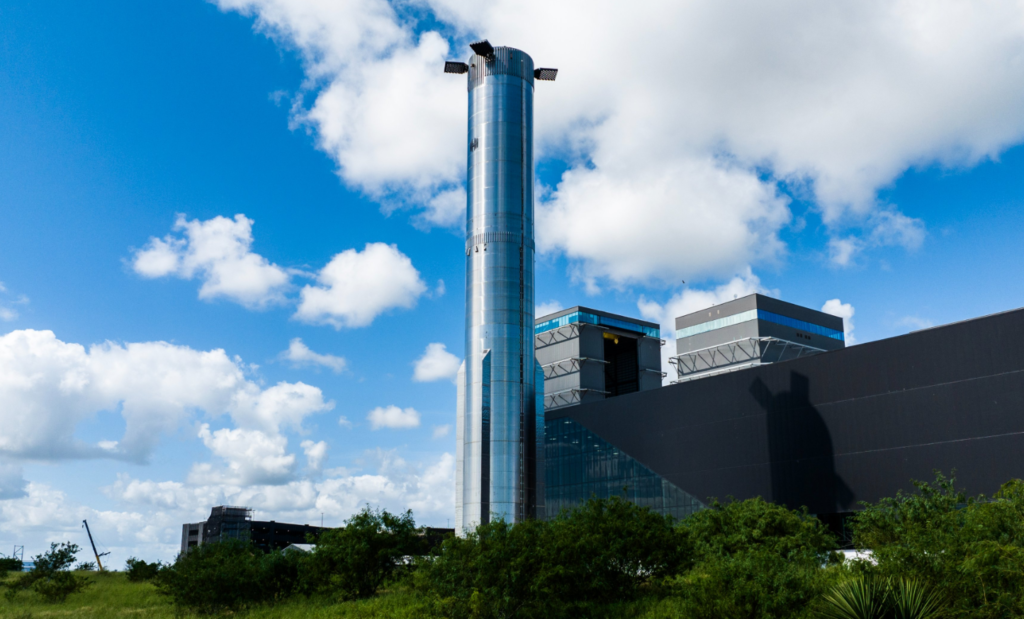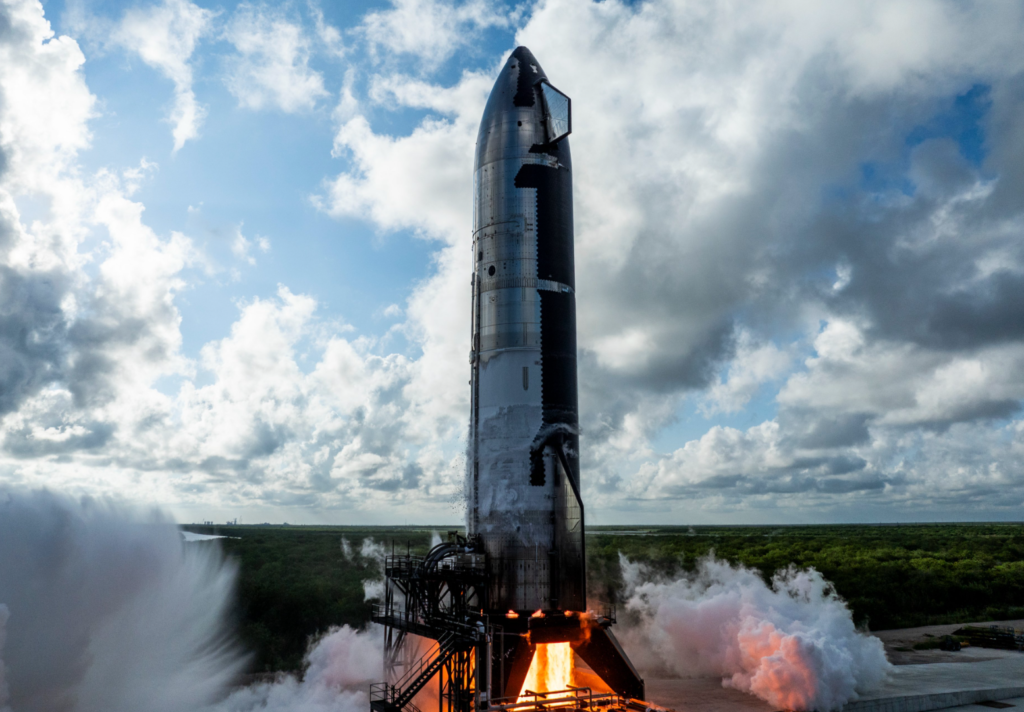Only about 10 days after Integrated Flight Test 5, SpaceX is getting ready for flight 6 of Starship. This includes the recent transport of the booster to the launchpad for testing. If that wasn’t enough, with SpaceX practically approved for the next flight already, it means another launch very soon is within reach.
Considering the specific ship and booster that will fly next, we have an idea of what the flight profile will include and some of the milestones the company wants to reach.
Testing Is Underway

Just yesterday we saw the next Super Heavy booster (Booster 13) make its way toward the launch site. SpaceX tweeted saying, “Flight 6 Super Heavy booster moved to the Starbase pad for testing. The move comes just one week after returning the first booster caught following launch.” With Flight 5 occurring just over a week ago, this is considered a quick turnaround and supports Flight 6 not long from now.
As for the Ship, even before Flight 5, it was undergoing testing. Back in September SpaceX completed a 6-engine static fire. With that in mind, the steps toward launch include a booster static fire, stacking the ship, installing the Flight Termination System, and finally the official launch approval and various paperwork.
Thankfully for SpaceX, the FAA is practically ready for the next flight of Starship. In a statement to NSF, the FAA said, “The SpaceX Starship/Super Heavy Flight 5 license authorization also includes FAA approval of the Flight 6 mission profile. The FAA determined the changes requested by SpaceX for Flight 6 are within the scope of what has been previously analyzed. Any modifications requested by SpaceX to the approved Flight 6 scope of operations may require further FAA evaluation. Contact SpaceX for additional detail” they said.
In other words, assuming the flight profile is not very different from Flight 5, SpaceX is practically ready on the approval side of things. Considering that launch approval for Starship flights is usually the determining factor of when SpaceX can get off the ground, this supports a very quick launch turnaround.
The most recent flight occurred 129 days after Flight 4. However, in addition to the big change in the flight profile, there was also quite a bit of back-and-forth between SpaceX and the FAA, along with other agencies that impacted launch approval. In reality, the fastest turnaround so far for Starship was the time between Flight 3 and Flight 4, at only 84 days.
For Flight 6, some believe SpaceX is targeting a launch as soon as next month, in November. While ambitious, the fact that the mission should be similar to the last flight combined with testing of both stages already underway are all good signs. The success of the catch also plays a big role with the pad in great condition and currently supporting Booster 13’s test campaign.
As far as what to expect for the flight profile, the timing and approval put SpaceX in an interesting position. At this point, SpaceX is working on both booster and especially ship hardware that is far more advanced than the current units undergoing testing for Flight 6. This next flight could be the last time we see a V1 Starship upper-stage launch.
The V1 Starship notably has its fins in the same position which is one of the main changes to the next variant. Specifically, the newer version of Starship has the forward flaps shifted leeward. This is meant to help improve reliability, ease of manufacturing, and payload to orbit. Combine this with the future addition of Raptor 3 engines among other upgrades and the current prototypes for Flight 6 are expected to look prehistoric compared to upcoming variants.
Looking at a few of the previous Starship flights, we’ve seen the burn-through issue continue to be a problem. The last flight was not nearly as significant as on Flight 4 however there obviously is still work to do. In that regard, the flap position change on Starship V2 is expected to help significantly if not solve the problem.
All of this begs the question of whether will we see another catch attempt and how similar will the next flight really be. As of right now, it’s hard to say as SpaceX hasn’t confirmed anything. It’s very possible they attempt another catch in order to hone in on the process and get even more experience with such an important maneuver.
For the upper stage, the main goal will likely be another accurate landing in the Indian Ocean. With SpaceX already hinting at catching the ship as soon as early next year, another example of it landing accurately will help their confidence toward that milestone.
Improvements From Flight 5

The main issues that occurred on Flight 5 included partial burn-through of the flaps which I already mentioned, some minimal damage to the exterior of the Super Heavy booster during its catch, and notably the warping of the engine nozzles on the booster.
After the launch Musk was quoted saying, “A few outer engine nozzles are warped from heating & some other minor issues, but these are easily addressed.” While physical changes to fix that issue might not be implemented before Flight 6, there are other ways the catch can be improved.
For example, SpaceX could tweak the entry angle, boost backburn startup, etc. All of which could play a role in the nozzle warping among other factors.
For the ship, between Flight 4 and Flight 5 SpaceX spent a lot of time improving the heat shield. Before flight 5 Musk said, “We’re going to replace the whole heat shield on the ship. So the new heat shield tile is about twice as strong as the ones that were on the last flight. We want to put an ablative secondary structure, basically ablative protection behind the tiles so that if the tiles crack or come loose it doesn’t cook the rocket” he said.
SpaceX highlighted that technicians spent more than 12,000 hours replacing the entire thermal protection system with newer-generation tiles, a backup ablative layer, and additional protections between the flap structures. Before the launch they said, “This massive effort, along with updates to the ship’s operations and software for reentry and landing burn, will look to improve upon the previous flight and bring Starship to a soft splashdown at the target area in the Indian Ocean.”
A similar process needs to be done for the next Ship set to launch on Flight 6. Exactly what the company will do compared to the last flight is not completely clear. It’s possible they do minimal upgrades in places where they believe have the highest risk of being destroyed during reentry.
It’s also important to point out that because SpaceX achieved basically all the milestones on the last flight, their options are limited with the hardware and flight approval they have available to them.
After Flight 5 they released a statement saying, “Starship’s fifth flight test lifted off on October 13, 2024, with our most ambitious test objectives yet as we work to demonstrate techniques fundamental to Starship and Super Heavy’s fully and rapidly reusable design. And on our first try, Mechazilla caught the booster.”
“Following a successful liftoff, ascent, stage separation, boostback burn, and coast, the Super Heavy booster performed its landing burn and was caught by the chopstick arms of the launch and catch tower at Starbase. Thousands of distinct vehicle and pad criteria had to be met prior to the catch attempt, and thanks to the tireless work of SpaceX engineers, we succeeded with catch on our first attempt.”
“Prior to catch, Starship executed another successful hot-staging separation, igniting its six Raptor engines and completing ascent into outer space. It coasted along its planned trajectory to the other side of the planet before executing a controlled reentry, passing through the phases of peak heating and maximum aerodynamic pressure, before executing a flip, landing burn, and splashdown at its target area in the Indian Ocean. The flight test concluded at splashdown 1 hour, 5 minutes and 40 seconds after launch.”
They finished by saying, “The entire SpaceX team should take pride in the engineering feat they just accomplished. The world witnessed what the future will look like when Starship starts carrying crew and cargo to destinations on Earth, the Moon, Mars and beyond” they said.
SpaceX normally doesn’t repeat flight profiles unless the last flight failed to complete them. For Flight 6 however, there hands are somewhat forced and there is no harm in getting additional data if they have approval and hardware ready.
On the last flight, SpaceX said in a statement, “Thousands of distinct vehicle and pad criteria must be met prior to a return and catch attempt of the Super Heavy booster, which will require healthy systems on the booster and tower and a manual command from the mission’s Flight Director. If this command is not sent prior to the completion of the boostback burn, or if automated health checks show unacceptable conditions with Super Heavy or the tower, the booster will default to a trajectory that takes it to a landing burn and soft splashdown in the Gulf of Mexico.”
This gave the company the option to simply just send the booster to the water like previous launches and not pose any risk to the tower or Stage 0 infrastructure. Depending on what SpaceX wants to do, a similar flight profile and booster go no go could be seen again on the next launch.
Conclusion
SpaceX just moved Booster 13 to the launch site in preparation for testing. With the ship already completing a static fire back in September, this puts the company in a good position as they work toward Flight 6. Combine this with the FAA already approving the next launch assuming its flight profile is similar, and a launch in November seems possible.
